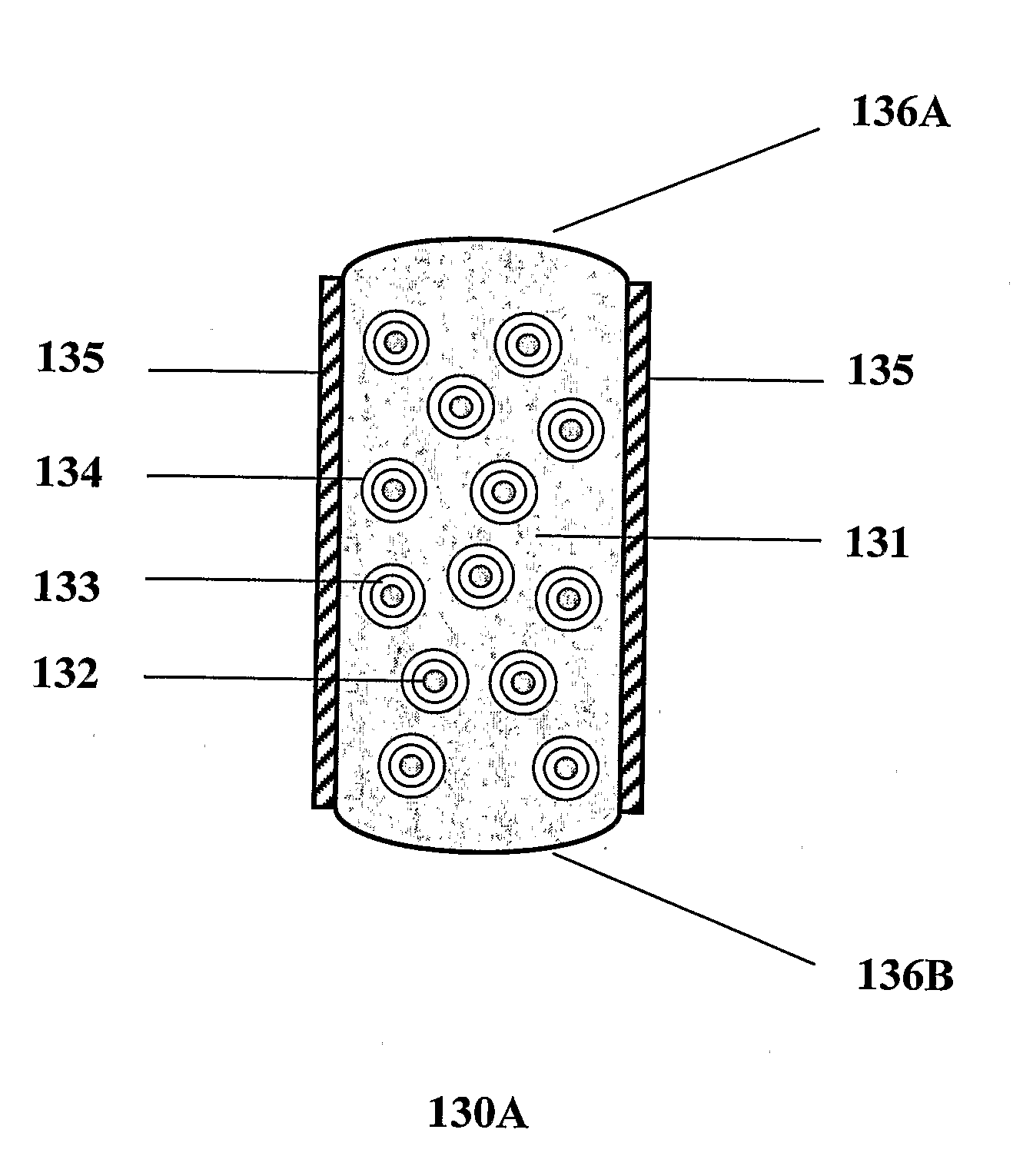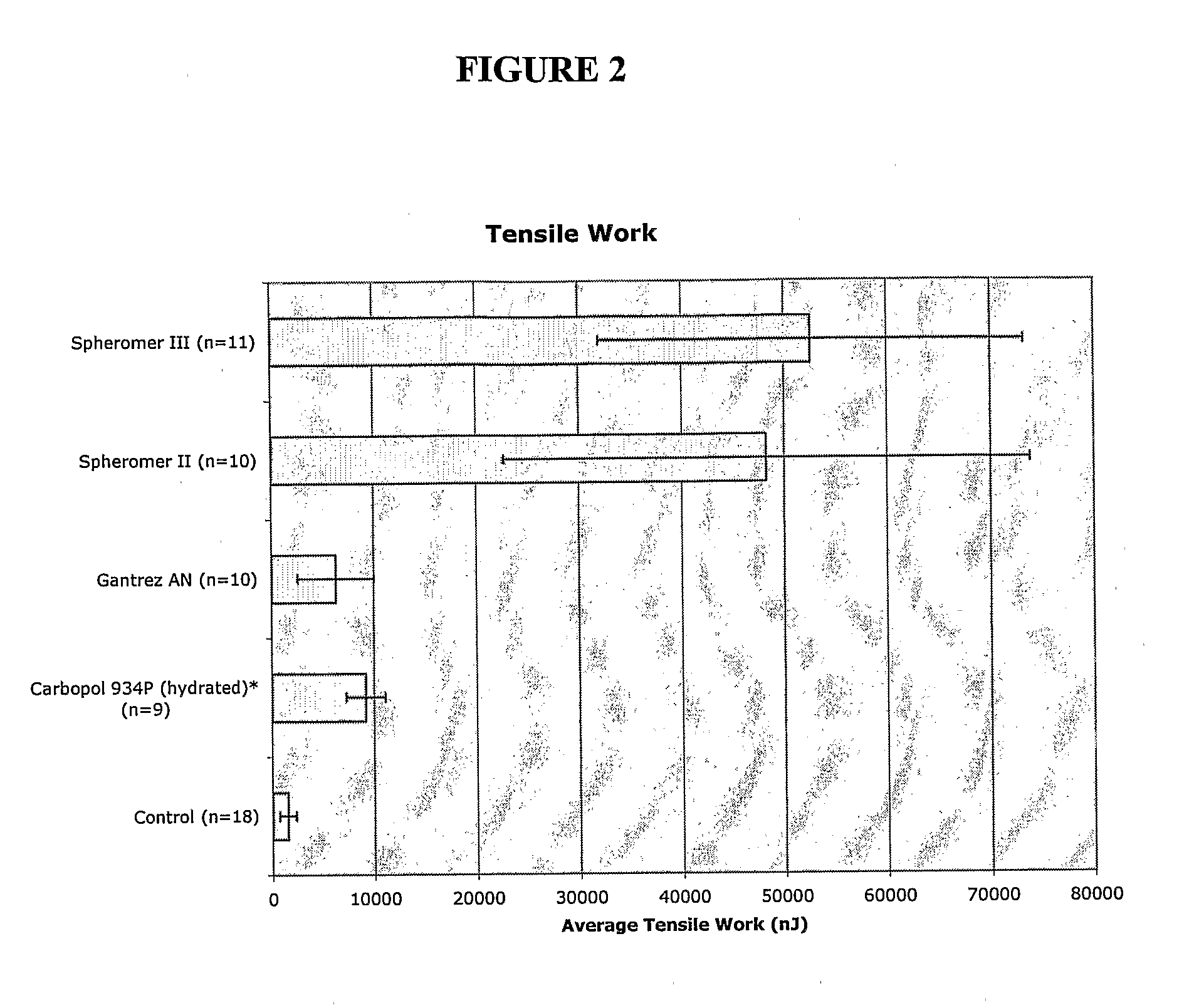Bioadhesive Rate-Controlled Oral Dosage Formulations
a bioadhesive and rate-controlled technology, applied in the direction of amide active ingredients, drug compositions, microcapsules, etc., can solve the problems of limited absorption window, drug release after the small intestine would not be of therapeutic value, and drug release after the small intestine is effective, so as to improve the bioadhesion of polymers, improve the bioadhesion effect, and improve the effect of bioadhesion
- Summary
- Abstract
- Description
- Claims
- Application Information
AI Technical Summary
Benefits of technology
Problems solved by technology
Method used
Image
Examples
example 1
Bioadhesion Assay
[0241]The bioadhesion of Spheromer™ II, Spheromer™ III, Gantrez® AN-119 BF (a copolymer of 2,5-Furandione and methoxyethene) and hydrated Carbopol® 934P NF (a cross-linked polyacrylic acid homopolymer) films, prepared by dip-coating on nylon supports, was tested using a Texture Analyzer TA XT II tensile tester, with pig intestine as the biological substrate. The parameters measured were fracture strength (peak force of detachment normalized for cross-sectional surface area) and tensile work (area under the deformation vs. load curve). Results are depicted in FIGS. 1 and 2.
[0242]Polymer films on supports were prepared by dip-coating in concentrated polymers solution and drying. Twenty percent (w / v) solutions were made for all test materials except for Carbopol® 934P, which was a 2% (w / v) solution in water. Spheromer™ II was dissolved with an equal amount of Eudragit® RL 100 in dichloromethane. The films on supports were air-dried for 24 hrs after dipping and lyophili...
example 2
Longitudinally Compressed Tablets Containing 250 mg Valacyclovir HCl (Lot #502-094)
[0244]Longitudinally compressed core tablets (LCT) were prepared by using a pair of 0.2618″ dies (Natoli Engineering). The compound die was filled with 250 mg of a Valacyclovir immediate release (IR) dry blend. The tablets were prepared by direct compaction at 500 psi for 1 second using standard 0.2618″ upper / lower punches and the GlobePharma Manual Tablet Compaction Machine (MTCM-1). Each tablet contained 250 mg Valacyclovir. The composition of core tablets is provided in Table 2.
[0245]The core tablets were first coated peripherally with an impermeable, solvent-cast film of polycaprolactone (PCL, MW 200 kDA) that was attached to the tablet by heat sealing at 40-60° C. Then, a second film comprising bioadhesive Spheromer II™ (Fumaric Anhydride Oligomer) blended in polycaprolactone was applied over the first film. Fumaric anhydride oligomer, polycaprolactone (MW 200 kDa) and dibutyl sebacate, in the 40...
example 3
Longitudinally Compressed Tablets Containing 400 mg Gabapentin (Lot # 411-104, 412-047 and 412-006)
[0248]Longitudinally compressed core tablets (LCTs) were prepared by using a pair of 0.2900″ dies (Natoli Engineering). The dies were carefully aligned and firmly joined together to form a compound die. The compound die was filled with 800 mg of a dry blend of drug and excipients. The tablets were prepared by direct compaction at 4000 psi for 1 second using standard 0.2900″ upper / lower punches and a GlobePharma Manual Tablet Compaction Machine (MTCM-1). Each tablet contained 400 mg Gabapentin. The composition of core tablets is provided in Table 3.
[0249]The LCTs were coated peripherally first with a single layer of impermeable PCL film that was heat-sealed to the tablet core. A second film comprising bioadhesive Spheromer II™ (Fumaric Anhydride Oligomer) blended in polycaprolactone was applied over the first film as in Example 2. Optionally, bioadhesive Spheromer™ polymer layers compri...
PUM
| Property | Measurement | Unit |
|---|---|---|
| half life | aaaaa | aaaaa |
| pH | aaaaa | aaaaa |
| fracture strength | aaaaa | aaaaa |
Abstract
Description
Claims
Application Information
 Login to View More
Login to View More - R&D
- Intellectual Property
- Life Sciences
- Materials
- Tech Scout
- Unparalleled Data Quality
- Higher Quality Content
- 60% Fewer Hallucinations
Browse by: Latest US Patents, China's latest patents, Technical Efficacy Thesaurus, Application Domain, Technology Topic, Popular Technical Reports.
© 2025 PatSnap. All rights reserved.Legal|Privacy policy|Modern Slavery Act Transparency Statement|Sitemap|About US| Contact US: help@patsnap.com



